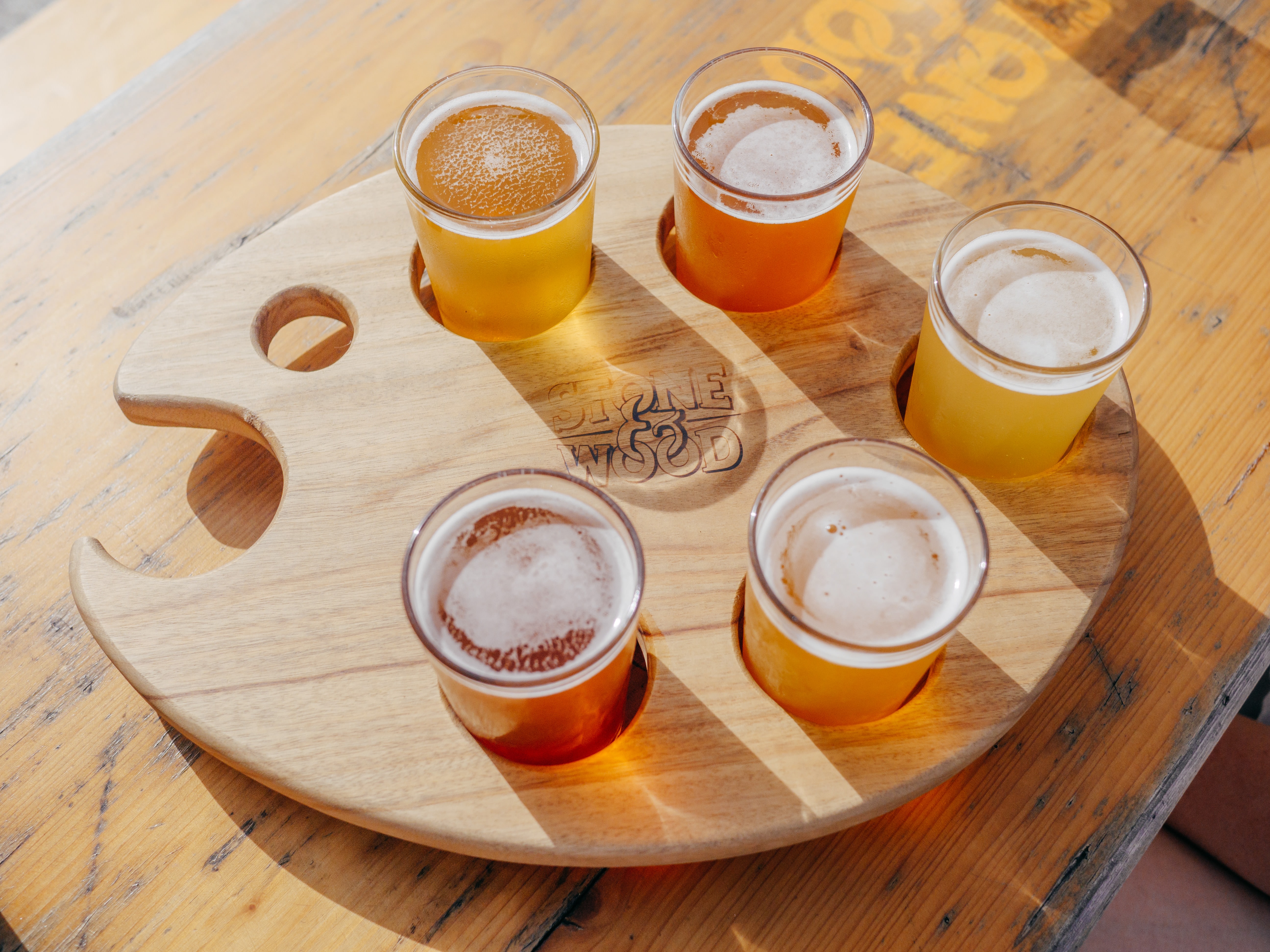According to the Brewer’s Association, beer consumption per capita declined by 2 percent in 2019. Yet, while sales and production have been declining for the past decade, the number of brewery jobs has more than doubled in the same time frame. These contrasting figures are the direct result of a rise in craft beer. While the biggest names in beer continue to falter, craft beer production rose nearly 4 percent in 2019. Craft beer now makes up approximately 20 percent of the beer industry’s total market. Typically sold at a much higher price point than conventional beer, craft beer is dominating the moment, if not yet, the market. Similarly we see this trend is occurring with distilleries and wineries.
As demand for craft beers and spirits continues to rise, restaurant and bar owners should look into how they can harness the momentum. We’ve compiled a few ways to highlight your local breweries and distilleries to help boost your sales.
Limited Time Drinks
Creative and bold flavor profiles are defining elements of craft beer culture. The sheer number of unique beers available continues to be a major reason that people choose craft beer. Take advantage of your customer’s desire for new tastes and rotate your selection by season, month, or week. Offering new varieties frequently will incentivize your customer base to check back often and try out your new options.
You can employ a similar tactic with local spirits and serve limited-time cocktails featuring a craft liquor. Get creative with your recipes or riff on a classic drink but make sure you emphasize the local spirit. You want to build the drink around the spirit, not the other way around. Mix up your offerings each month or create drinks around specific holidays and seasons. Either way, leverage the limited-time nature of these drinks by promoting them on social media platforms or as a special at the bar.
Create an Exclusive Beer
Partner with a local brewery to create a one-of-a-kind beer. A limited-release beer is a great marketing opportunity for your bar or restaurant, and if it’s successful, will attract new customers who will likely spend money on other drinks and food. While there is some risk involved, remember that breweries experiment with new beers frequently and they’re usually a success. Plus, if the beer takes off, the brewery might later launch your exclusive as a core brand. The Heady Topper, a Vermont double IPA, has seen enormous success. The beer began as an occasional offering but through word of mouth and craft brew websites achieved international acclaim. Even if your partnership doesn’t yield a top 5 beer of the year, having your own beer is a good way to stand out from competitors and attract new guests.
Hosting (Socially Distant) Events
Co-hosting an event doesn’t have to be an expensive and large-scale endeavor that dominates the whole bar. Instead, create a pairing menu that showcases the distillery or brewery’s drinks, and your best appetizers. Customers who come for the drinks might end up interested in your food, and those who know your food might end up trying some of the featured beers, wines, or spirits.
You can tailor your event for a theme or holiday, emphasize tasting, or make it a routine way of introducing seasonal drinks. Events also provide a good opportunity to promote your bar in person and on social media. Even if people don’t make it that evening, you’ve landed on their radar and they may come back another time. Drinks tend to sell themselves, so your focus should be on getting people to the bar in the first place.
Moreover, a lot of craft beer consumers go directly to breweries for an authentic experience. If you’re partnering with a local distillery or brewery and both advertise, you’ll tap into some of their audience and likely attract new customers.
Humanize the Brew
As demographics shift and consumers reach for local beers, more people have become interested in the brewing process and the backstory of their local bar. Work with your local brewery or distillery to put together informational pamphlets with facts, tasting notes, and descriptions of beers. Distribute these with corresponding beer orders, or better yet, create an introductory flight with specific tasting notes. Flights are particularly helpful for familiarizing customers with your beer offerings. Make sure your staff are knowledgeable about your featured drinks and can answer any questions that your customers might have.
Social Media
According to Brewbound, the average craft beer drinker is between the ages of 21 and 44 and makes between $75,000 and $99,000 annually. Those who fall into this category tend to have disposable income and identify as frequent social media users. Take advantage of this and use your social media platforms to attract and retain customers. Engage with similar accounts, host giveaways, and post frequently to develop a following. Social media is also a great place to announce new seasonal varieties, local partnerships, and any other important updates. Your older, more traditional crowd will likely not engage with a lot of the content you post online. This isn’t necessarily a bad thing. Unless you’re trying to become a strict micro-brew pub, you’ll want to tend to the balance between old and new types of customers. Rolling out too many in-house changes might alienate established regulars so make sure to pace yourself, keep up to date with your establishment's data, and adjust accordingly.
Craft brewing and distilling are no longer niche industries. The trendy, multi-billion-dollar market is only set to expand more and more each year, and incorporating these drinks into your menu is a valuable way to increase your revenue. Work with your local breweries and distilleries to boost your profit and tap into a larger audience by combining your marketing efforts.



Comments